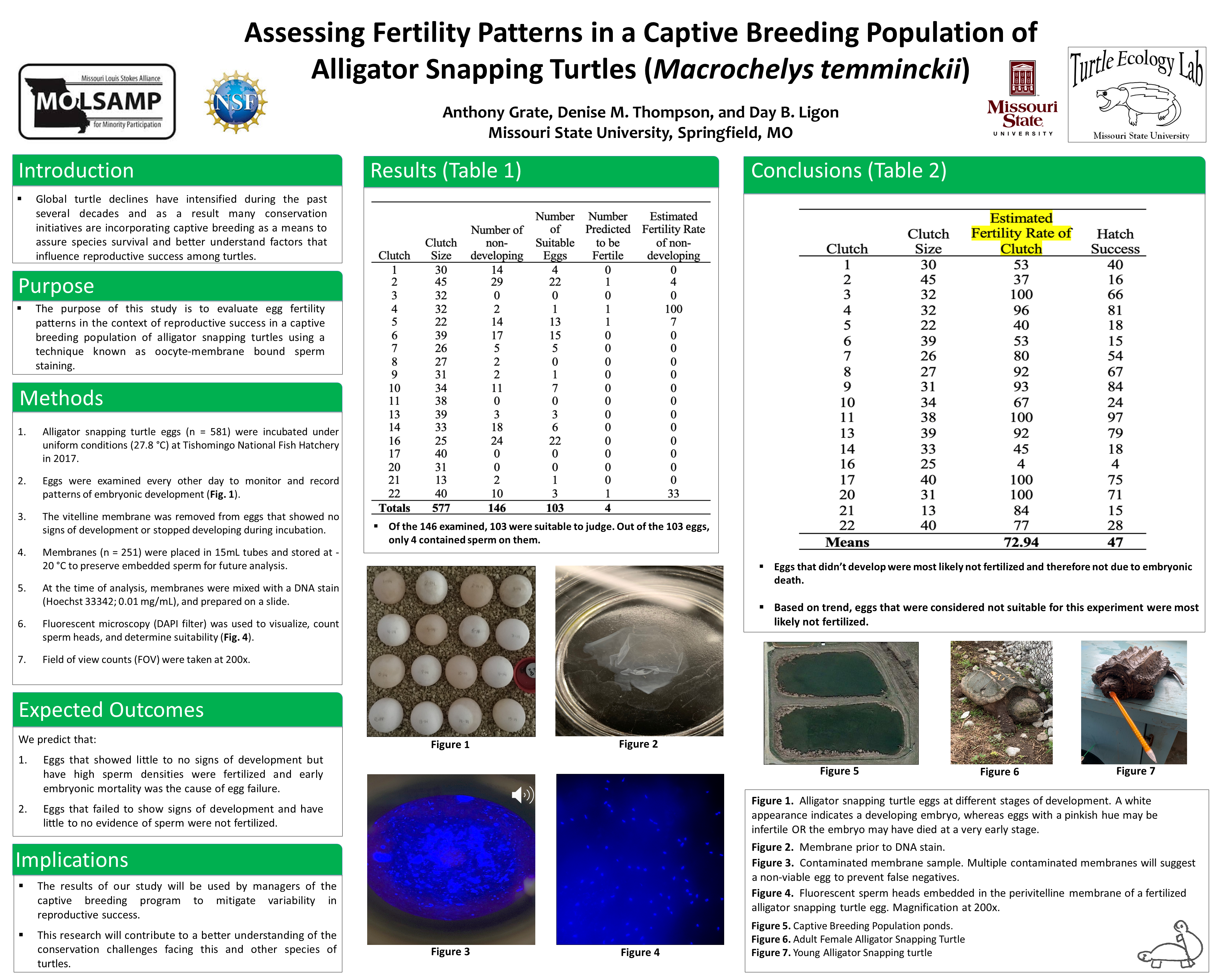Anthony Grate
Assessing Fertility Patterns in a Captive Population of Alligator Snapping Turtles (Macrochelys temminckii)
Anthony Grate, Missouri State University, MO
Co-Author(s): Denise M. Thompson, Missouri State University, Springfield, MO; Day B. Ligon, Missouri State University, Springfield, MO.
Global turtle declines have accelerated in recent decades, and as a result many conservation initiatives use captive breeding as a means to restore populations and assure species survival. Despite its importance for many taxa, turtle mating systems remain understudied and little is known about factors that influence reproductive success. The purpose of our study was to evaluate egg fertility patterns in the context of reproductive success in a captive breeding population of alligator snapping turtles (Macrochelys temminckii) housed in southeastern Oklahoma. We used a technique known as Oocyte-membrane Bound Sperm Detection to quantify sperm densities in alligator snapping turtle eggs that showed no signs of embryonic development to ascertain whether or not individual eggs had been fertilized. We inferred that eggs that had high sperm densities but showed no evidence of development likely had been fertilized, but that early embryonic mortality resulted in egg failure. Conversely, eggs that failed to develop and had little or no evidence of sperm presence were inferred to be infertile. This research highlights an important conservation challenge facing this and other species of turtle that exhibit variable hatching success rates, and will be especially informative for captive propagation efforts.
